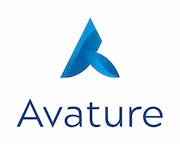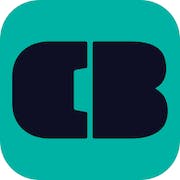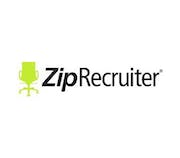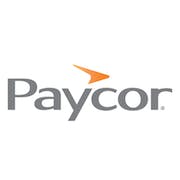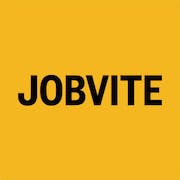Looking for the best applicant tracking software? Our comprehensive buyer's guide has got you covered. Discover top-rated solutions and make informed decisions to streamline your hiring process. Click now!
As the job market becomes increasingly competitive, companies need an efficient and effective way to manage their hiring process. That's where applicant tracking software (ATS) comes in, streamlining everything from posting job openings to reviewing resumes and interviewing candidates.
The ATS market is fast growing, with Grand View Research predicting it will be worth $3.71 billion by 2030, compared to $2.14 billion in 2021. With so many options available on the market, it can be overwhelming to choose the right one. But fear not, because this ATS buyer's guide is here to help. In it, we'll dive into the features and benefits of various ATS offerings, so that you can make an informed decision and find the software that meets the unique needs of your business.
What is applicant tracking software?
Applicant tracking software, commonly known as ATS, is a type of software that helps companies manage their recruitment process more efficiently. It acts as a centralized database, allowing companies to track, store, and manage all candidate information in one place. Before the advent of applicant tracking systems, companies used manual methods, which were time-consuming, expensive, and prone to errors. The introduction of ATS has revolutionized recruitment, making the process faster, easier, and less expensive.
ATS is widely used by companies across various industries, including healthcare, technology, finance, education, government, and nonprofit organizations to help them streamline their recruitment process by automating tasks. In fact, it's estimated that 75% of recruiters use an ATS for the hiring process. It also provides powerful analytics and reporting features that can help companies analyze their recruitment data and make data-driven decisions.
Common use cases of applicant tracking software include:
- Resume screening: Applicant tracking systems automatically scan resumes for specific keywords, qualifications, and job requirements to identify the most qualified candidates.
- Candidate tracking: It allows companies to track and manage candidate status, emails, interview schedules, and feedback.
- Interview scheduling: applicant tracking also helps streamline the scheduling process by sending automated interview invitations and reminders.
- Collaborative hiring: It enables recruitment teams to collaborate and easily share candidate information, schedules, and feedback.
- Compliance: This type of software helps companies comply with federal and state laws related to recruitment and hiring.
There's no one-size-fits-all when it comes to the types of companies that use applicant tracking software. However, companies that have a large number of job openings and receive a high volume of resumes often benefit the most from using an applicant tracking program.
With the rising trend of remote work, the need for ATS has increased, especially for companies that get flooded with applications.
Key benefits of implementing applicant tracking software
In today's competitive job market, recruiting and hiring the right talent for your business can be a challenge, with hundreds of resumes pouring in for a single position. This is where applicant tracking software can lighten the load and streamline your recruitment process.
Applicant tracking systems are a crucial tool for businesses of all sizes, as it offers a range of benefits that can help to attract, evaluate, and hire top talent in an efficient and effective manner. Despite traditionally being most useful for large enterprises, 60% of small to medium-sized businesses with less than 100 employees plan to invest in ATS.
Here are the main benefits of applicant tracking software:
- Applicant tracking systems can help to identify the best candidates for open positions based on their qualifications and experience by screening resumes to determine the most qualified applicants.
- It saves businesses time by automating many tasks such as pre-screening, candidate communication, interview scheduling and applicant tracking, which would otherwise be time-consuming for the HR team.
- Applicant tracking platforms allow multiple stakeholders within a business to collaborate and share notes on candidates, ensuring a seamless recruitment process that keeps everyone on the same page.
- Applicant tracking can also help ensure a smooth and efficient onboarding process, which is key to retaining top talent, by managing all your candidate application data in one central database.
- It helps ensure compliance with equal opportunity employment laws to prevent discrimination by standardizing screening, reviewing and ranking.
Applicant tracking software is a valuable tool for any business looking to simplify their recruitment processes and attract top talent. These types of platforms are highly customizable and offer a variety of solutions, ranging from candidate sourcing and screening to new hire orientation. As a result, they can save your company significant time and money while increasing recruitment effectiveness and the quality of your hires.
10 important features of applicant tracking software
ATS is a crucial component of the modern recruitment process. Designed to automate the initial screening stages of the hiring process, it can save recruiters and hiring managers time by filtering out under qualified applicants and highlighting the most promising applications. Here, we'll take a closer look at ten important features you need in your applicant tracking software:
-
Resume parsing
A key feature of applicant tracking systems is the ability to parse resumes. By analyzing resumes and extracting relevant information, this feature enables the automated processing of candidate applications.
-
Keyword filtering
To ensure that only the most suitable candidates are considered, ATS platforms can filter resumes based on keywords related to the job requirements. This helps hiring managers quickly identify the most appropriate candidates for the role.
-
Customizable workflows
Many ATS solutions offer customizable workflows, allowing recruiters to set up their own unique recruitment process. This feature ensures that every stage of the recruitment process is clearly defined and structured based on how your organization operates.
-
Automated communications
This type of software can also automate communications with candidates, reducing the workload for recruitment teams. Automated emails, reminders, and notifications can keep candidates engaged and informed throughout the recruitment process.
-
Talent pool management
With the right ATS, recruiters can build and manage a talent pool of qualified candidates. By keeping track of all previous applications, candidate information and resumes, recruiters can draw upon this pool as and when needed.
-
Social media integration
Leveraging social media platforms, applicant tracking software can source candidates more effectively and reach a wider audience of potential job seekers.
-
Reporting and analytics
ATS platforms need to be able to provide recruiters with detailed reporting and analytics. This feature allows recruitment teams to quickly identify trends, issues, and areas for improvement within the recruitment process.
-
Collaboration and user roles
Many ATS solutions come with user role management and collaboration features, allowing recruitment teams to work together more effectively with other departments and stakeholders within the business. This feature ensures that everyone involved in the recruitment process can access the right information at the right time.
-
Compliance features
With evolving data privacy and compliance laws, applicant tracking programs with built-in compliance features can help recruiters stay on the right side of the law.
-
Integration capabilities
Finally, it's important applicant tracking software can integrate with other HR systems, such as performance management or employee onboarding tools. This integration ensures the recruitment processes can be aligned with other HR activities, creating a more holistic and streamlined approach to people management.
With these ten core features, applicant tracking systems can help make the recruitment process easier, more efficient, and more effective. By automating key stages of the hiring process, ATS can help recruiters and hiring managers find the best candidates for the job.
8 considerations when choosing applicant tracking software
Applicant tracking systems have become an essential tool for businesses of all sizes and industries to manage their recruitment and hiring processes. However, it can be challenging to determine which ATS will best serve your business needs. Here, we'll explore the key factors to consider when purchasing an applicant tracking program:
-
User-friendliness
Your ATS should be user-friendly and intuitive, enabling recruiters and HR staff to navigate the software without spending too much of their valuable time learning how to use it.
-
Customizable
It should provide organizations with the ability to customize their candidate sourcing, screening, and the onboarding process based on their specific needs.
-
Integration capability
Your ATS needs to be able to integrate seamlessly with your existing HR technologies, such as HR management systems, payroll software, and job boards.
-
Mobile-friendliness
The platform should be mobile-friendly, enabling recruiters to access and manage the recruiting process from anywhere, anytime, using their mobile device.
-
Recruitment marketing
The platform needs to be able to support employers in marketing their job openings effectively source candidates.
-
Compliance features
Applicant tracking systems should comply with all legal requirements and industry standards. It shouldn't discriminate against protected classes and implement an equal opportunity approach.
-
Analytics
It needs to be able to provide employers with detailed analytics and insights into their recruitment and hiring process, enabling them to make data-driven decisions.
-
Pricing
Most importantly, it needs to be able to provide a pricing plan that is flexible and affordable, aligning with an organization's budget.
Choosing the right ATS is critical for managing recruitment effectively. Applicant tracking systems should be user-friendly, able to integrate with current systems, and provide useful analytics. These considerations will enable HR personnel to choose the right applicant tracking system for their recruitment process, making it efficient and cost-effective.
Software trends for applicant tracking software
In 2024 and beyond, ATS advancements will change the way hiring is done. One of the biggest trends will be the evolution of artificial intelligence (AI) in recruitment technology.
Applicant tracking systems leveraging AI will be able to provide quicker and more accurate resume screening and candidate matching.
The rising importance of mobile-friendly ATS solutions will also be important as the convenience of mobile devices allows for faster interactions and applications. Coupled with the rise of remote working, it'll be even more important for recruiters to be responsive and be able to access applicant tracking programs on the go.
Additionally, gamification elements are expected to be integrated into the hiring process, making it more engaging and interactive.
The integration of video interviewing software in ATS platforms is also expected to allow for a more efficient hiring process, decreasing the time it takes to screen candidates.

